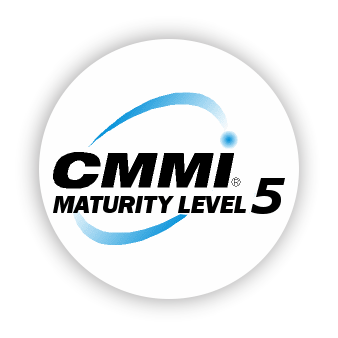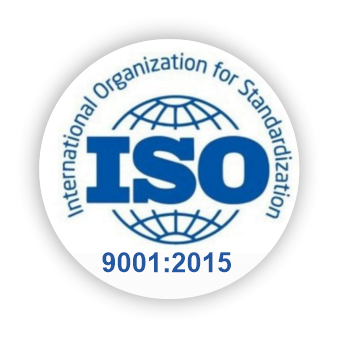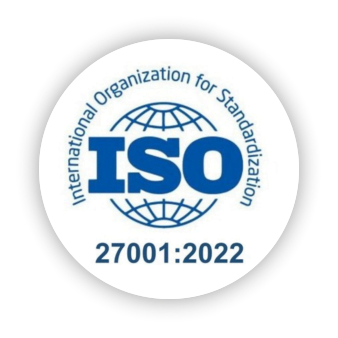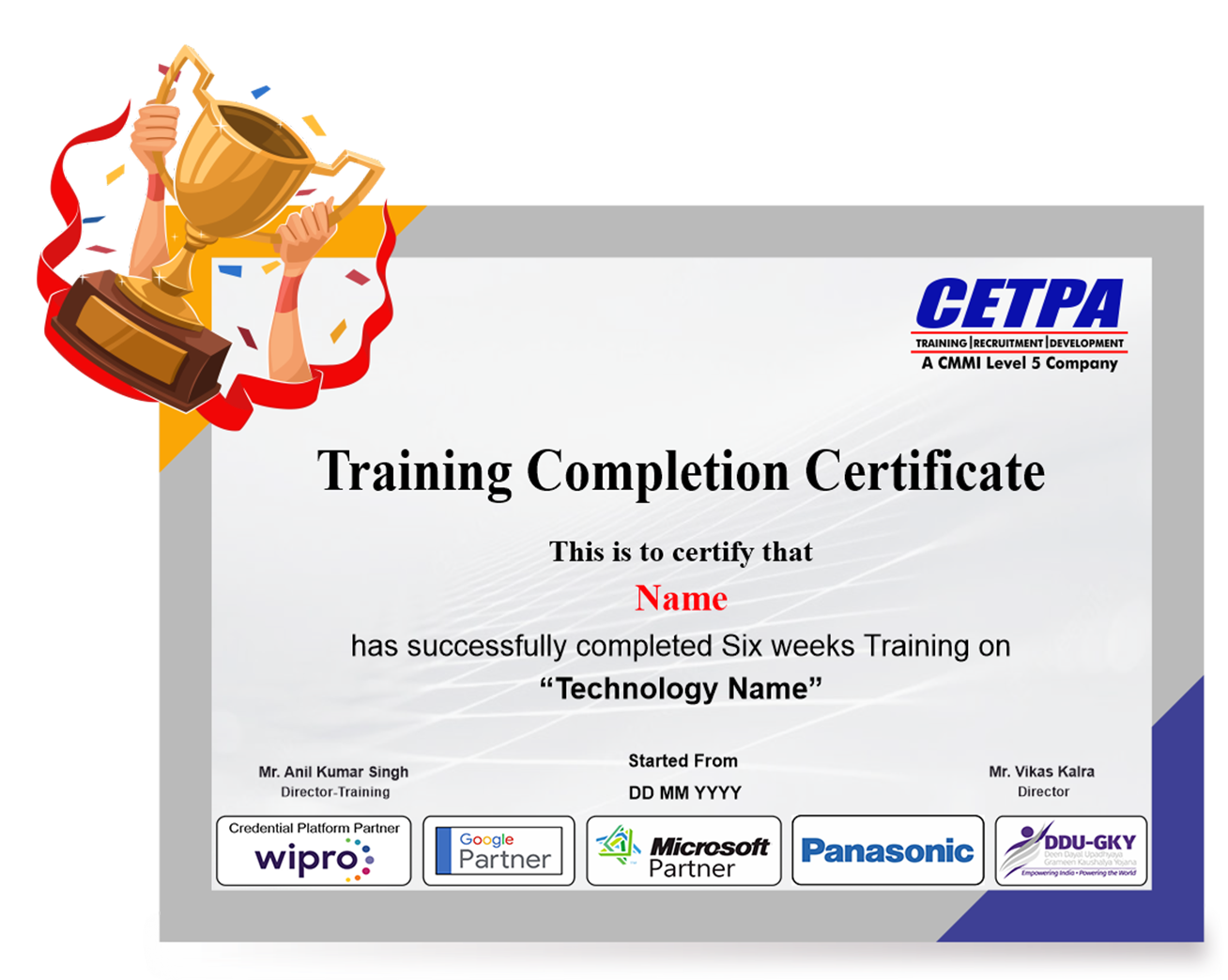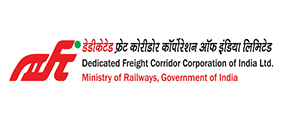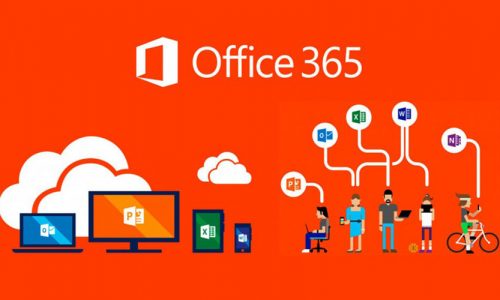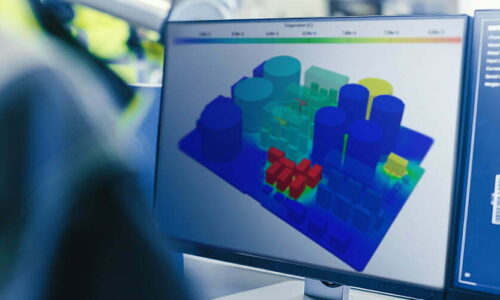MCSA Certification Training
Discover the depths of MCSA Technology. Join us now to gain comprehensive insights into MCSA Technology from a seasoned professional.
![]() 5 out of 5 based on 101 user reviews. |
5 out of 5 based on 101 user reviews. |  |
|  |
|  |
| 
Enquire Now
Accreditations & Affiliations
Training Features
Best MCSA Training Institute in Delhi NCR
MCSA Training in Delhi, MCSA Training Course in Delhi, MCSA Training Institute in Noida
CETPA INFOTECH is the best MCSA Training Institute in Noida .It is the best MCSA training institute in Delhi NCR. CETPA is the official training partner of Microsoft and delivers basic as well as advance level MCSA program according to Microsoft Standards. MCSA (Microsoft Certified Systems Administrator) is the industry standard for demonstrating competence in managing and troubleshooting network environment. MCSA is a mid level certification you can obtain between your MCP and your MCSE. It is a prerequisite for more advanced Microsoft certifications and validates your foundation of core technical skills and prepares you for a sustainable IT.
CETPA offers 4 weeks- 6 weeks hands-on MCSA Training to students as well as professionals in Noida with the help of Industry Experts who have excellent knowledge and real time industry experience.It is the best MCSA training in Delhi NCR. Their training programs are cost effective with the combination of several innovative learning methods and delivery modes. This training will teach you all you need to know for the certification exam: how to configure file and print services, how to deploy, manage and maintain Microsoft servers, among other relevant topics.
CETPA has the right mix of technical skills and experience to provide real-time knowledge to students. For this, it is facilitating high end infrastructure and to help students in their practical sessions, lab facility is provided all the time. CETPA just not only teaches technology, but also share real-time implementation expertise to gain practical skills and knowledge to enlighten student’s career. Students undertake the live project as a part of the Training program to increase their practical expertise. The trainers in CETPA assures that the curriculum of the MCSA Training is up to the industry expectations and they explain everything with respect to industry demands so that students are able to reach their goal more efficiently.
The classes at CETPA are organized according to the convenience of the students i.e. on weekdays as well as on weekends. The classes are held from 10.00 A.M. in the morning to 7.30 P.M in the evening and students can select any time slot according to their schedule.
MCSA Training in Noida by CETPA is a certified training institute. At the end of the course, students will get the certificates which are internationally recognized. Moreover, once you complete the MCSA Course successfully, CETPA places you in the top most MNC’s that offer attractive salary and appealing career exposure.
Talk To Advisor
MODE/SCHEDULE OF TRAINING:
| Delivery Mode | Location | Course Duration | Schedule (New Batch Starting) |
|---|---|---|---|
| Classroom Training (Regular/ Weekend Batch) | *Noida/ *Roorkee/ *Dehradun | 4/6/12/24 Weeks | New Batch Wednesday/ Saturday |
| *Instructor-Led Online Training | Online | 40/60 Hours | Every Saturday or as per the need |
| *Virtual Online Training | Online | 40/60 Hours | 24x7 Anytime |
| College Campus Training | India or Abroad | 40/60 Hours | As per Client’s need |
| Corporate Training (Fly-a-Trainer) | Training in India or Abroad | As per need | Customized Course Schedule |
Course Content
This module introduces students to the editions of Windows Server 2012 and the new Windows Server 2012 management tools. It also covers how to install Windows Server 2012, how to perform post-deployment tasks, and how to perform basic administrative tasks.
Lessons
- Windows Server 2012 Overview
- Installing Windows Server 2012
- Post-Installation Configuration of Windows Server 2012
- Overview of Windows Server 2012 Management
- Introduction to Windows PowerShell
Lab : Deploying and Managing Windows Server 2012
After completing this module, students will be able to:
- Describe Windows Server 2012.
- Install Windows Server 2012.
- Perform post-installation configuration of Windows Server 2012.
- Describe the management tools available in Windows Server 2012.
- Perform basic administrative tasks using Windows PowerShell.
Introduction to Active Directory Domain ServicesThis module covers the structure of Active Directory Domain Services (AD DS) and its various components, such as forest, domain, and organizational units (OUs). It also gives an overview of domain controllers, in addition to choices that are available with Windows Server 2012 for installing AD DS on a server.Lessons
- Overview of AD DS
- Overview of Domain Controllers
- Installing a Domain Controller
Lab : Installing Domain Controllers
After completing this module, students will be able to:
- Describe the structure of AD DS.
- Describe the purpose of domain controllers.
- Install a domain controller.
This module describes how to manage user accounts and computer accounts, including how to manage various consumer devices that employees use. The module also covers how to manage an enterprise network by managing groups, and how to delegate administrative tasks to designated users or groups.
Lessons
- Managing User Accounts
- Managing Groups
- Managing Computer Accounts
- Delegating Administration
Lab : Managing Active Directory Domain Services Objects
After completing this module, students will be able to:
- Manage user accounts with graphical tools.
- Manage group accounts with graphical tools.
- Manage computer accounts.
- Delegate permissions to perform AD DS administration.
This module describes how to use command-line tools and Windows PowerShell to automate AD DS administration. It discusses various command-line tools and Windows PowerShell commands, and then describes how to use these tools and commands to modify objects individually and in bulk operations
Lessons
- Using Command-line Tools for AD DS Administration
- Using Windows PowerShell for AD DS Administration
- Performing Bulk Operations with Windows PowerShell
Lab : Automating AD DS Administration by Using Windows PowerShell
After completing this module, students will be able to:
- Use command-line tools for AD DS administration.
- Use Windows PowerShell cmdlets for AD DS administration.
- Perform bulk operations by using Windows PowerShell.
This module discusses using IPv4, which is the network protocol used on the Internet and on local area networks. In this module, students learn how to implement an IPv4 addressing scheme and how to troubleshoot network communication. This module also covers how to determine and troubleshoot network-related problems.
Lessons
- Overview of TCP/IP
- Understanding IPv4 Addressing
- Subnetting and Supernetting
- Configuring and Troubleshooting IPv4
Lab : Implementing IPv4
After completing this module, students will be able to:
- Describe the TCP/IP protocol suite.
- Describe IPv4 addressing.
- Determine a subnet mask necessary for supernetting or subnetting.
- Configure IPv4 and troubleshoot IPv4 communication.
This module covers supporting and troubleshooting a Windows Server–based network infrastructure by deploying, configuring, and troubleshooting the Dynamic Host Configuration Protocol (DHCP) server role
Lessons
- Overview of the DHCP Server Role
- Configuring DHCP Scopes
- Managing a DHCP Database
- Securing and Monitoring DHCP
Lab : Implementing DHCP
After completing this module, students will be able to:
- Explain the DHCP server role.
- Configure DHCP scopes.
- Manage a DHCP database.
- Secure and monitor the DHCP server role.
Implementing DNSThis module describes name resolution for Windows operating system clients and Windows Server servers. It also covers installing and configuring a DNS Server service and its components.
Lessons
- Name Resolution for Windows Clients and Servers
- Installing a DNS Server
- Managing DNS Zones
Lab : Implementing DNS
After completing this module, students will be able to:
- Describe name resolution for Windows operating system clients and Windows Server servers.
- Install and manage a DNS Server.
- Manage DNS zones.
Lessons
- Overview of IPv6
- IPv6 Addressing
- Coexistence with IPv4
- IPv6 Transition Technologies
Lab : Implementing IPv6
After completing this module, students will be able to:
- Describe the features and benefits of IPv6.
- Describe IPv6 addressing.
- Describe IPv6 coexistence with IPv4.
- Describe IPv6 transition technologies.
This module introduces several different storage technologies. It discusses how to implement the storage solutions in Windows Server 2012, and how to use the new Storage Spaces feature, which enables you to combine disks into pools that you can configure for automatic management.
Lessons
- Overview of Storage
- Managing Disks and Volumes
- Implementing Storage Spaces
Lab : Implementing Local Storage
After completing this module, students will be able to:
- Describe various storage technologies.
- Explain how to manage disks and volumes.
- Explain how to implement Storage Spaces.
This module discusses how to provide file and print resources with Windows Server 2012. It describes how to secure files and folders, how to protect previous versions of files and folders by using shadow copies, and how to give workers remote access to corporate files by implementing the new Work Folders role service. It also describes new network printing features that help manage the network printing environment
Lessons
- Securing Files and Folders
- Protecting Shared Files and Folders by Using Shadow Copies
- Configuring Work Folders
- Configuring Network Printin
Lab : Implementing File and Print Services
After completing this module, students will be able to:
- Secure shared files and folders.
- Protect shared files and folders by using shadow copies.
- Configure the Work Folders role service.
- Configure network printing.
This module provides an overview of Group Policy and provides details about how to implement Group Policy
Lessons
- Overview of Group Policy
- Group Policy Processing
- Implementing a Central Store for Administrative Templates
Lab : Implementing Group Policy
After completing this module, students will be able to:
- Create and manage Group Policy Objects (GPOs).
- Describe Group Policy processing.
- Implement a Central Store for Administrative Templates.
This module describes Windows Server 2012 operating system security. It covers how to identify security threats, plan your strategy to mitigate security threats, and secure your Windows Server 2012 infrastructure.
Lessons
- Security Overview for Windows Operating Systems
- Configuring Security Settings
- Restricting Software
- Configuring Windows Firewall with Advanced Security
Lab : Increasing Security for Server ResourcesLab : Configuring AppLocker and Windows Firewall
After completing this module, students will be able to:
- Describe WindowsServer operating system security.
- Configure security settings by using Group Policy.
- Increase security for server resources.
- Restrict unauthorized software from running on servers and clients.
- Configure Windows Firewall with Advanced Security.
VThis module describes virtualization technologies available on Windows, specifically focusing on the Hyper-V role in Windows Server 2012 and Windows Server 2012 R2. It covers the components of the Hyper-V role, configuring and deploying the role, in addition to and how to configure and manage key components of a Hyper-V implementation, such as Storage and Networking
Lessons
- Overview of Virtualization Technologies
- Implementing Hyper-V
- Managing Virtual Machine Storage
- Managing Virtual Networks
After completing this module, students will be able to:
- Describe virtualization technologies.
- Implement Hyper-V.
- Manage virtual machine storage.
- Manage virtual networks
This module explains how to configure and troubleshoot DNS, including DNS replication and caching.
Lessons
- Configuring the DNS Server Role
- Configuring DNS Zones
- Configuring DNS Zone Transfers
- Managing and Troubleshooting DNS
Lab : Configuring and Troubleshooting DNS
After completing this module, students will be able to:
- Install and configure the DNS server role.
- Create and configure DNS zones.
- Configure DNS zone transfers.
- Manage and troubleshoot DNS.
This module explains how to implement virtualized domain controllers and read-only domain controller (RODCs). It also explains how to perform common AD DS administrative tasks and manage the AD DS Database.
Lessons
- Overview of AD DS
- Implementing Virtualized Domain Controllers
- Implementing RODCs
- Administering AD DS
- Managing the AD DS Database
Lab : Maintaining AD DS
After completing this module, students will be able to:
- Implement virtualized domain controllers.
- Implement RODCs.
- Administer AD DS.
- Manage the AD DS database
This module explains how to create, configure and automate the creation of user accounts. It also explains how to configure account-related properties of user objects. It further explains how to create and administer Managed Service Accounts.
Lessons
- Configuring Password Policy and User Account Lockout Settings
- Configuring Managed Service Accounts
Lab : Managing User and Service Accounts
After completing this module, students will be able to:
- Configure password policy and user account lockout settings.
- Configure managed service accounts.
This module explains how to implement a GPO infrastructure. This also teaches how to perform common GPO management tasks, and manage GPOs by using Windows PowerShell. It also focuses on troubleshooting the application of GPOs.
Lessons
- Introducing Group Policy
- Implementing and Administering GPOs
- Group Policy Scope and Group Policy Processing
- Troubleshooting the Application of GPOs
Lab : Implementing a Group Policy Infrastructure
After completing this module, students will be able to:
- Explain what Group Policy is.
- Implement and administer Group Policy Objects (GPOs).
- Manage Group Policy scope and Group Policy processing.
- Troubleshoot the application of GPOs.
This module explains how you can use Group Policy Objects (GPOs) to implement desktop environments across your organization by using Administrative Templates, Folder Redirection, Group Policy preferences, and where applicable, use
software deployment to install and update application programs. It is important to know how to use these various GPO features so that you can configure your users’ computer settings properly.Lessons
- Implementing Administrative Templates
- Configuring Folder Redirection and Scripts
- Configuring Group Policy Preferences
- Managing Software with Group Policy
Lab : Managing User Desktops with Group Policy
After completing this module, students will be able to:
- Configure folder redirection and scripts by using GPOs.
- Describe and implement Administrative Templates.
- Configure GPO preferences.
- Deploy software by using GPOs.
Lessons
- Installing and Configuring a Network Policy Server
- Configuring RADIUS Clients and Servers
- NPS Authentication Methods
- Monitoring and Troubleshooting a Network Policy Server
Lab : Installing and Configuring a Network Policy Server
After completing this module, students will be able to:
- Install and configure a Network Policy Server (NPS).
- Configure clients and servers with the Remote Authentication Dial-In User Service (RADIUS) protocol.
- Explain NPS authentication methods.
- Monitor and troubleshoot NPS.
This module explains how to configure, monitor, and troubleshoot NAP. It also explains how NAP can help to protect your network and the various NAP enforcement processes.
Lessons
- Overview of Network Access Protection
- Overview of NAP Enforcement Processes
- Configuring NAP
- Configuring IPSec Enforcement for NAP
- Monitoring and Troubleshooting NAP
Lab : Implementing Network Access Protection
After completing this module, students will be able to:
- Describe how NAP can help to protect your network.
- Describe the various NAP enforcement processes.
- Configure NAP.
- Monitor and troubleshoot NAP.
In this module, you will learn how to implement and manage remote access in Windows Server 2012. You will also learn how to implement DirectAccess by using the Getting Started wizard, implement and manage an advanced DirectAccess infrastructure, and implement VPN.
- Overview of Remote Access
- Implementing DirectAccess by Using the Getting Started Wizard
- Implementing and Managing an Advanced DirectAccess Infrastructure
- Implementing VPN
- Implementing Web Application Proxy
Lab : Implementing DirectAccess by Using the Getting Started WizardLab
Deploying an Advanced DirectAccess SolutionLab : Implementing VPNLab : Implementing Web Application Proxy After completing this module, students will be able to:
- Install and manage the Remote Access role in Windows Server 2012 operating system.
- Implement DirectAccess by using the Getting Started Wizard.
- Implement and manage an advanced DirectAccess Infrastructure.
- Implement VPN access.
- Implement Web Application Proxy.
This module describes FSRM, configure quotas, file screening, and storage reports and implement classification management and file management tasks. It describes the components of the DFS. I also explains how to configure DFS namespaces and DFS replication
Lessons
- Overview of FSRM
- Using FSRM to Manage Quotas, File Screens, and Storage Reports
- Implementing Classification and File Management Tasks
- Overview of DFS
- Configuring DFS Namespaces
- Configuring and Troubleshooting DFS Replication
Lab :
Configuring Quotas and File Screening Using File Server Resource ManagerLab : Implementing Distributed File System After completing this module, students will be able to:
- Describe the File Server Resource Manager (FSRM) in the Windows Server 2012 operating system.
- Use FSRM to manage quotas, file screens, and storage reports.
- Implement classification and file management tasks.
- Describe Distributed File System (DFS).
- Configure DFS namespaces.
- Configure and troubleshoot DFS Replication
This module explains how to encrypt files using EFS and configure advanced auditing features.
Lessons
- Encrypting Drives by Using BitLocker
- Encrypting Files by Using EFS
- Configuring Advanced Auditing
Lab :
Configuring Encryption and Advanced Auditing. After completing this module, students will be able to:
- Secure data by using BitLocker Drive Encryption.
- Encrypt files by using Encrypting File System (EFS).
- Configure advanced auditing.
This module explains how to create and manage server images by using Windows Deployment Services
Lessons
- Overview of Windows Deployment Services
- Managing Images
- Implementing Deployment with Windows Deployment Services
- Administering Windows Deployment Services
Lab : Using Windows Deployment Services to Deploy Windows Server 2012
After completing this module, students will be able to:
- Describe the important features and functionality of Windows Deployment Services (Windows DS).
- Manage images by using Windows Assessment and Deployment Kit (Windows ADK) Tools.
- Configure Windows Deployment Services in Windows Server 2012.
- Perform deployments with Windows Deployment Services.
This module explains how to use Windows Server Update Services (WSUS) to deploy updates to Windows servers and clients
Lessons
- Overview of WSUS
- Deploying Updates with WSUS
Lab : Implementing Update Management
After completing this module, students will be able to:
- Describe the role of WSUS.
- Describe the WSUS update management process.
- Deploy updates with WSUS.
This module explains the monitoring tools available in Windows Server 2012. it also explains how to use Performance Monitor and monitor events.
Lessons
- Monitoring Tools
- Using Performance Monitor.
- Monitoring Event Logs
Lab : Monitoring Windows Server 2012
After completing this module, students will be able to:
- Describe the monitoring tools for the Windows Server 2012 operating system.
- Use Performance Monitor to view and analyze performance statistics of programs that are running on their servers.
- Monitor event logs to view and interpret the recorded events.
Module 1: Implementing Advanced Network Services
In this module students will be able to configure advanced features for Dynamic Host Configuration Protocol (DHCP) and Domain Name System (DNS), and configure IP Address Management (IPAM).
Lessons
- Configuring Advanced DHCP Features
- Configuring Advanced DNS Settings
- Implementing IPAM
- Managing IP Address Spaces with IPAM
Lab : Implementing Advanced Network Services
After completing this module, students will be able to:
- Configure advanced features in DHCP with Windows Server 2012
- Configure the advanced DNS settings in Windows Server 2012.
- Implement IP Address Management in Windows Server 2012.
Module 2: Implementing Advanced File Services
In this module students will be able to configure file services to meet advanced business requirements.Lessons
- Configuring iSCSI Storage
- Configuring BranchCache
- Optimizing Storage Usage
Lab : Implementing Advanced File ServicesLab : Implementing BranchCache
After completing this module, students will be able to:
- Learn how to configure and manage iSCSI.
- Implement BranchCache using Windows Server 2012.
- Implement Windows Server 2012 features that optimize storage utilization.
Module 3: Implementing Dynamic Access Control
In this module students will be able to configure Dynamic Access Control (DAC) to manage and audit access to shared files.
Lessons
- Overview of DAC
- Implementing DAC Components
- Implementing DAC for Access Control
- Implementing Access Denied Assistance
- Implementing and Managing Work Folders
Implementing Secure Data Access
After completing this module, students will be able to:
- Describe DAC.
- Implement and configure components of DAC.
- Implement DAC on file servers.
- Describe and implement access- denied assistance.
- Implement the integration of Work Folders with DAC.
Module 4: Implementing Distributed Active Directory Domain Services Deployments
In this module students will be able to plan and implement an Active Directory Domain Services (AD DS) deployment that includes multiple domains and forests.
Lessons
- Overview of Distributed AD DS Deployments
- Deploying a Distributed AD DS Environment
- Configuring AD DS Trusts
Lab : Implementing Distributed AD DS Deployments
After completing this module, students will be able to:
- Describe the components of a highly complex AD DS deployment
- Implement a complex AD DS deployment.
- Configure AD DS trusts.
Module 5: Implementing Active Directory Domain Services Sites and Replication
In this module students will be able to plan and implement an AD DS deployment that includes multiple locations.
Lessons
- AD DS Replication Overview
- Configuring AD DS Sites
- Configuring and Monitoring AD DS Replication
Lab : Implementing AD DS Sites and Replication
After completing this module, students will be able to:
- Describe how replication works in a Windows Server 2012 AD DS environment.
- Configure AD DS sites in order to optimize AD DS network traffic.
- Configure and monitor AD DS replication.
Module 6: Implementing AD CS
SIn this module students will be able to implement an Active Directory Certificate Services (AD CS) deployment
- Using Certificates in a Business Environment
- PKI Overview
- Deploying CAs
- Deploying and Managing Certificate Templates
- Implementing Certificate Distribution and Revocation
- Managing Certificate Recover
Lab : Deploying and Configuring CA HierarchyLab : Deploying and Managing Certificates
After completing this module, students will be able to:
- Describe and use certificates in business environments.
- Describe the Public Key Infrastructure (PKI) components and concepts, and describe the options for implementing a certification authority infrastructure.
- Plan and implement an AD CS certification authority infrastructure.
- Plan and implement a certificate template deployment using an AD CS certification authority.
- Plan and implement certificate distribution and revocation.
- Configure and manage key archival and recovery.
Module 7: Implementing Active Directory Rights Management Services
In this module students will be able to implement an AD RMS deployment.Lessons
- AD RMS Overview
- Deploying and Managing an AD RMS Infrastructure
- Configuring AD RMS Content Protection
- Configuring External Access to AD RMS
Lab : Implementing AD RMS
After completing this module, students will be able to:
- Describe what AD RMS is, and how it can be used to achieve content protection.
- Deploy and manage an AD RMS infrastructure.
- Configure content protection using AD RMS.
- Enable users outside the organization to access content protected by using AD RMS
Module 8: Implementing and Administering AD FS
In this module students will be able to implement an Active Directory Federation Services (AD FS) deployment.
Lessons
- Overview of AD FS
- Deploying AD FS
- Implementing AD FS for a Single Organization
- Deploying AD FS in a Business-to-Business Federation Scenario
- Extending AD FS to External Clients
Lab : Implementing AD FSLab : Implementing AD FS for External Partners and Users
After completing this module, students will be able to:
- Describe the identity federation business scenarios and how AD FS can be used to address the scenarios.
- Configure the AD FS prerequisites and deploy the AD FS services.
- Implement AD FS to enable SSO in a single organization.
- Implement AD FS to enable SSO between federated partners.
- Implement the Web Application Proxy and describe WorkPlace Join integration with AD FS
Module 9: Implementing Network Load Balancing
In this module students will be able to provide high availability and load balancing for web-based applications by implementing Network Load Balancing (NLB).
Lessons
- Overview of NLB
- Configuring an NLB Cluster
- Planning an NLB Implementation
Lab : Implementing NLB
After completing this module, students will be able to:
- Describe how NLB works.
- Configure an NLB cluster.
- Plan an NLB implementation.
Module 10: Implementing Failover Clustering
In this module students will be able to provide high availability for network services and applications by implementing failover clustering.
Lessons
- Overview of Failover Clustering
- Implementing a Failover Cluster
- Configuring Highly Available Applications and Services on a Failover Cluster
- Maintaining a Failover Cluster
- Implementing a Multi-Site Failover Cluster
Lab : Implementing Failover Clustering
After completing this module, students will be able to:
- Explain failover clustering features in Windows Server 2012.
- Describe how to implement a failover cluster.
- Explain how to configure highly available applications and services on a failover cluster.
- Explain how to maintain a failover cluster and how to use new maintenance features.
- Describe how to implement multi-site failover cluster.
Module 11: Implementing Failover Clustering with Hyper-V
In this module students will be able to deploy and manage Hyper-V virtual machines in a failover cluster
Lessons
- Overview of Integrating Hyper-V with Failover Clustering
- Implementing Hyper-V Virtual Machines on Failover Clusters
- Implementing Hyper-V Virtual Machine Movement
Lab : Implementing Failover Clustering with Hyper-V
After completing this module, students will be able to:
- Explain options for making virtual machines highly available.
- Describe how to implement virtual machines in a failover cluster deployed on a host.
- Explain options for moving a virtual machine or its storage.
- Explain a high level overview of Microsoft System Center 2012- Virtual Machine Manager (VMM) 2012.
Module 12: Implementing Business Continuity and Disaster Recovery
In this module students will be able to implement a backup and disaster recovery solution based on business and technical requirements
Lessons
- Data Protection Overview
- Implementing Windows Server Backup.
- Implementing Server and Data Recovery
Lab : Implementing Windows Server Backup and Restore
After completing this module, students will be able to:
- Describe the considerations that must be included when you are implementing a disaster recovery solution.
- Plan and implement a backup solution for Windows Server 2012.
- Plan and implement server and data recovery.
Our Process

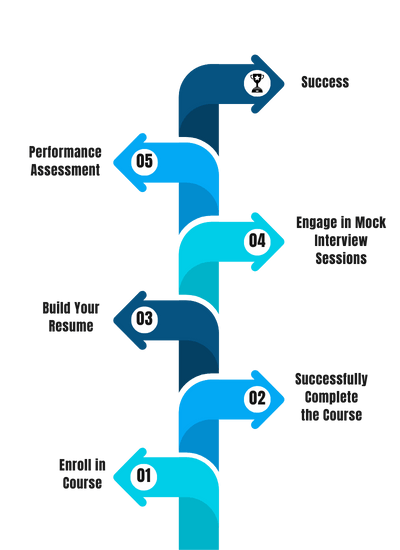
FAQ'S
- Classroom Training
- Online Training
- Corporate Training
- On campus Training
Career Assistance
- Build an Impressive Resume
- Attend Mock-Up Interviews with Experts
- Get Interviews & Get Hired
Training Certification
Earn your certificate
Your certificate and skills are vital to the extent of jump-starting your career and giving you a chance to compete in a global space.
Share your achievement
Talk about it on Linkedin, Twitter, Facebook, boost your resume or frame it- tell your friend and colleagues about it.
Upcoming Batches
What People Say
Our Partners
Need Customized Curriculum? Request Now
Structure your learning and get a certificate to prove it.

Our Clients
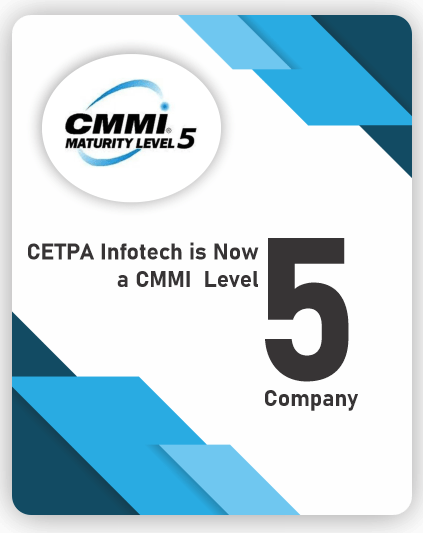
Our Placed Students
Related Courses
Review Us
Suhana Sharma
![]() 17 Feb 2024
17 Feb 2024
Big Data Hadoop Training In Noida
Cetpa is the best training company for big data hadoop. I am saying this because of my excellent experience with cetpa they provide globally certified big data hadoop training along with assured placement assistance. If you want to learn hadoop by working on live project,then opt for cetpa.
Course Features
- Lectures 0
- Quizzes 0
- Duration 10 weeks
- Skill level All levels
- Language English
- Students 0
- Assessments Yes



